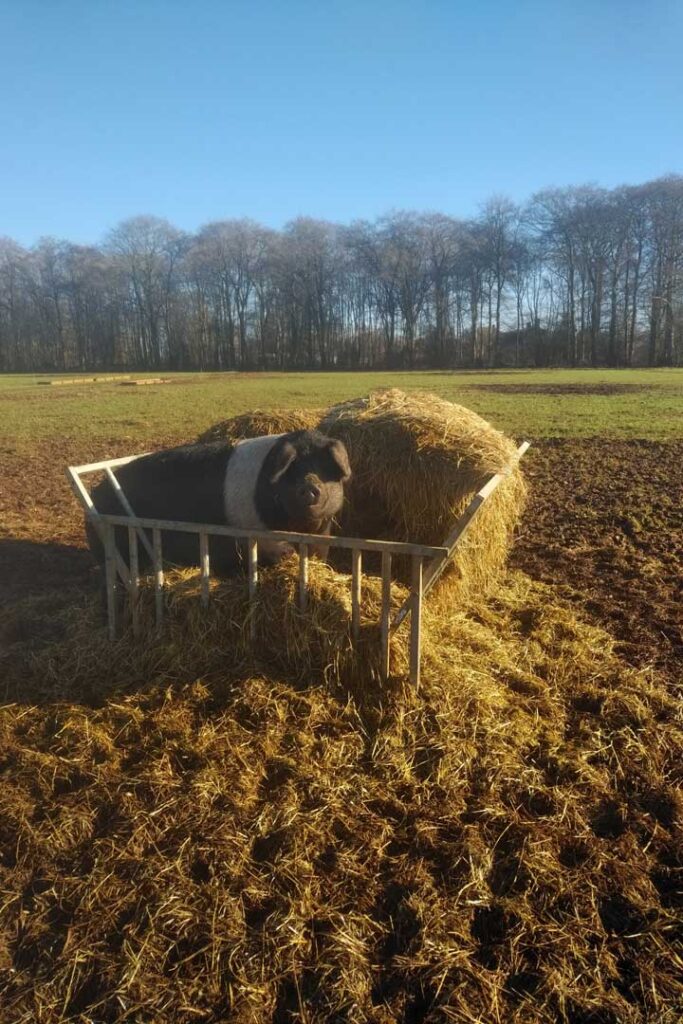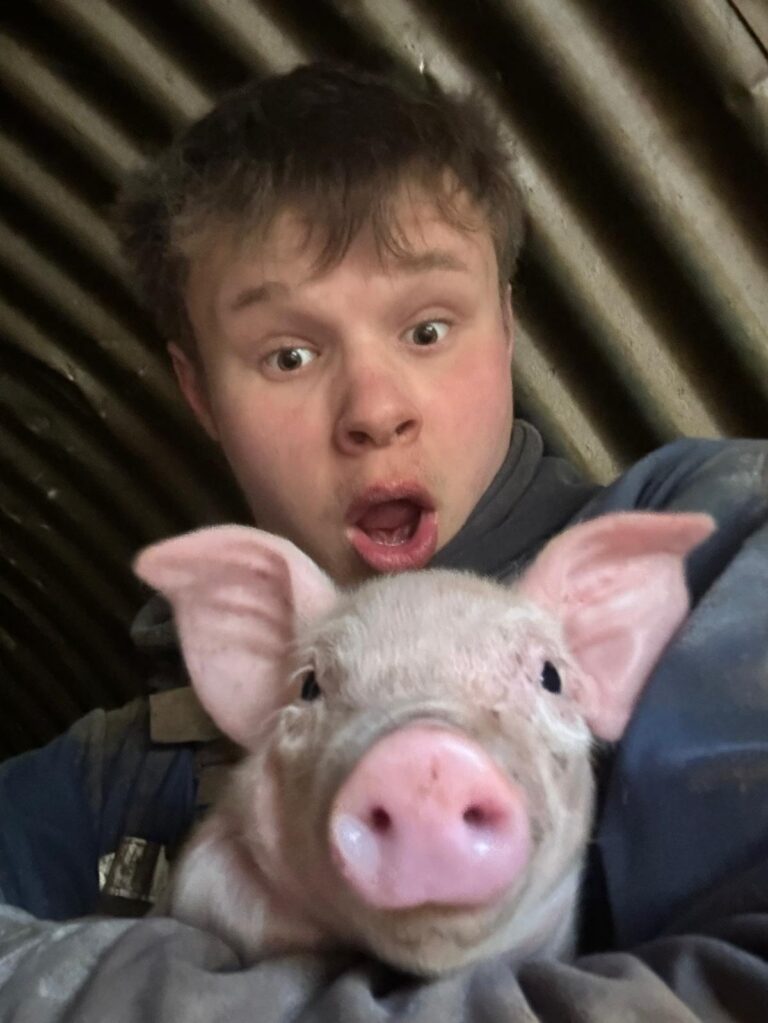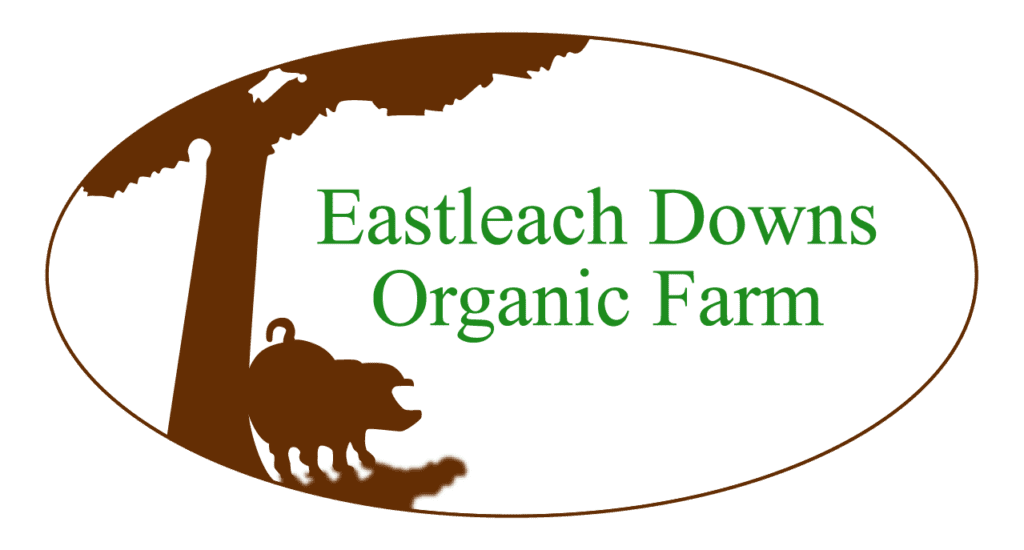Our post this month is written by Kier Kemp (known to us as Koo) who has been working with us since May.
Helen has asked me to do a blog post on my time here at the farm. I think trying to summarise the three months I have spent here into a few paragraphs is beyond my literary capabilities, so I’ll try to give you a sense through a day in the life.
I arrive at work just before Sam, who’s commute is about 150 meters, much shorter than mine from fulbrook, and considerably straighter, out of the door, and down the track to the yard. It’s 7:30 in the morning and though the newly risen sun is veiled behind a thin coating of cloud, the humidity is high and the crickets are promising a hot day. The first job on the list is always breakfast, and Sam is as eager as the pigs to get started, but first we need to talk about what I’ve missed in the 24 hours I’ve been away. This can be a surprisingly huge amount, from litters of piglets being born and fostered between different mothers, to the arrival of new British saddleback pigs from Sussex with names like ‘Mad Molly’. Also run of the mill news is a fresh mistake I have unwittingly made the day before and not clocked, such as dragging the tractor’s straw loader across the farm, cutting water pipes and fences on the way. Daily I learn how much destructive power one clown with a tractor can have. Luckily Helen and Sam are very understanding employers and I still have a job. So after the debriefing, I trundle down the track to start the feed.
There are 400 + pigs on the farm, though thankfully we only have to hand feed the boars with their hareem of ‘dry sows’ (females who don’t yet have piglets) and the ‘farrowings’ (sows who have recently had piglets). While I do this I check the fences for power, and try to ensure that everyone gets a fair share of food. At some pens you have to get into to deposit piles of food, which feels like you’ve walked into a ring of oinking bumper cars.
After everyone is fed the next task is to check every. single. pig. This is done every day, and has been, I suppose for the last 30 years, H & S’s ceaseless diligence is genuinely awe inspiring. The first few times I found checking a dizzying job, as not only do you have to assess the health of the pigs, you have to check the food levels in the hoppers (think big metal automatic pet feeder), check the straw beds and make sure each pen’s water trough is functioning. This all requires a level of independent judgement and prediction, Helen and Sam can tell how much food a group of pigs a certain age will eat in a day, how much straw is comfy and how much is too much. If this sounds easy, I can promise you it’s not.
A key element of this job seems to be a mixture of timing and detective work based on whatever evidence you can find. A good example of this is in checking the pigs; a healthy pig is a ‘bright’ pig. There is no singular defining feature of a bright pig, but a healthy pig is always doing something when stood up, rooting, sniffing, playing or just staring you down. A dull pig can be identified not solely from the lack of these things but also by a certain lethargy. For me to be confident a pig is well I need to see them walking around. This presents the challenge of waking up sleeping pigs who don’t want to get out of their warm beds. Sam stands outside and runs his knuckles over the corrugated roof, bringing projectile pigs shooting out, Helen will often talk the pigs out to get a good look at them. I have to resort to a mix of cajoling and actually ducking in the huts with them. Getting the ‘teenage’ pigs out of bed is especially hard, and interestingly they also always have the messiest paddocks, so it seems to be a phase shared across species.
I want to tell you all pigs are created equal, however in my eyes this is not true, some pigs are more equal than others. New to the farm are the British Saddlebacks (BSB for short), black pigs with a white stripe across their shoulders and front legs, giving them their name. They are large docile pigs with floppy ears that hide their eyes, making them easily startled but dually giving them an endearing mannerism of flicking their ears up when they want to take a look at you, much like a person would flick back their hair to clear their eyes. The jewel in the crown right now though is the farm’s first litter of saddleback piglets, who are tiny, pristine jet-black pigs., which to me look a bit like Neapolitan icecream. They are my favourite stop on my check and I always want to stay longer than I do.
The rest of my day is varied, dealing with whatever varied job I’m offered to do, in summer though ensuring that the piglets water dishes are filled throughout the day is a staple. Today I have been building more pens for the older pigs, this involves me sledgehammering corner posts into the ground and tying wire between them to create a paddock. While I do this, the huts must be moved from across the farm, placed and bedded up, water run pipe run up to the remote field, troughs and then water butts all moved and plumbed in accordingly. Sam mentioned to me today that he felt that he spent all of his time just moving things around the farm, which I think was a fairly accurate comment on a large part of this job, which is simply transferring material and energy around the farm to facilitate the natural processes on which we rely. Doesn’t mean it’s not bloody hard work though.
Koo is actually supposed to be in Australia studying dolphin communication as part of his Masters Degree (Poor him, lucky us!)







